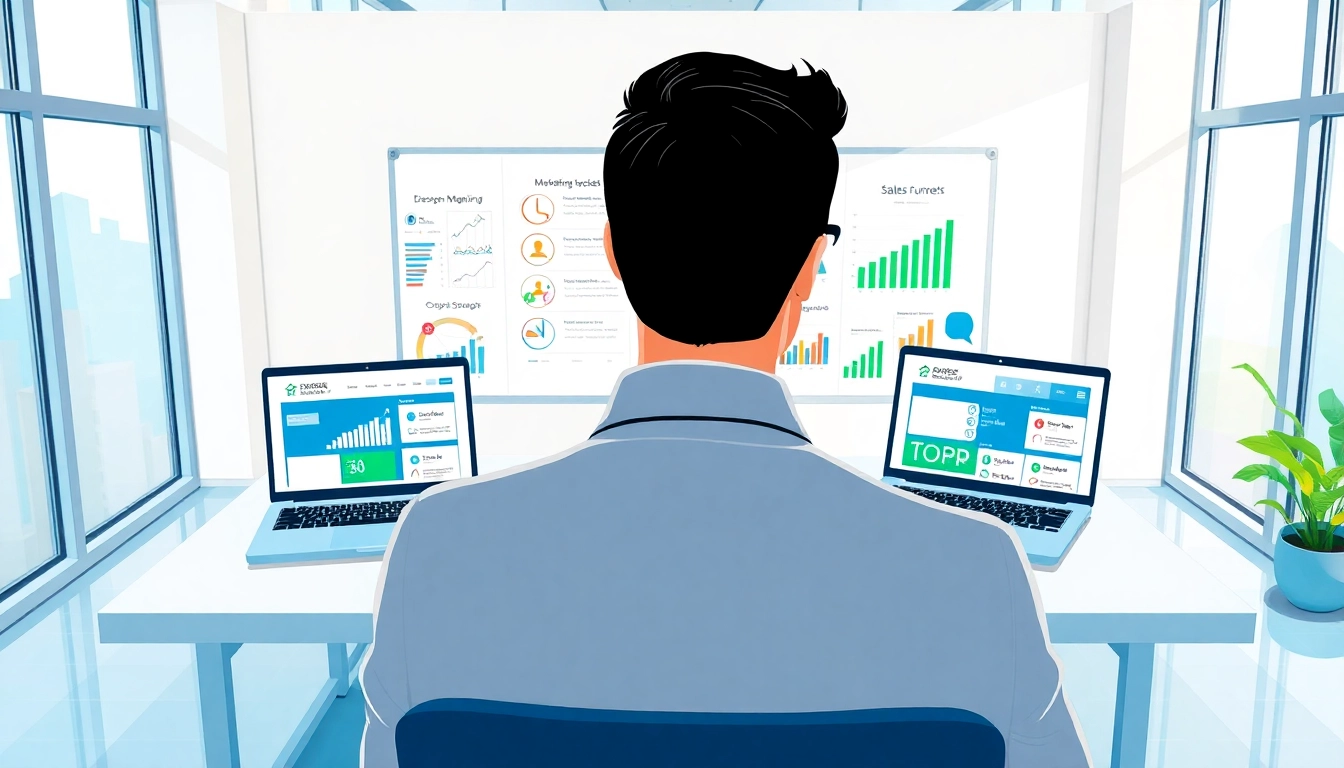Understanding the Basics of Russell Brunson Funnel Secrets
The concept of sales funnels has transformed the landscape of online marketing, offering businesses a streamlined approach to convert prospects into customers. At its core, the Russell Brunson funnel secrets encompasses the strategies and techniques that lead to successful funnel creation and optimization. This essential understanding is crucial for entrepreneurs and marketers alike who aim to enhance their sales processes and grow their businesses effectively.
What Are Sales Funnels?
A sales funnel is a marketing concept that delineates the journey a potential customer takes from the first interaction with a brand to the final purchase decision. Unlike traditional marketing methods, which might focus solely on product features or benefits, funnels emphasize guiding the customer through a carefully structured path to facilitate conversion. The funnel typically consists of several stages: Awareness, Interest, Decision, and Action (AIDA).
The Importance of Marketing Funnels
Marketing funnels are crucial for several reasons. They help businesses:
- Define Customer Journey: Understanding the stages allows businesses to tailor their messaging and offers to meet prospects’ needs at each point in the journey.
- Increase Conversions: By systematically addressing potential objections and providing appropriate calls to action, businesses can significantly increase their conversion rates.
- Enhance Customer Experience: A well-structured funnel provides a smooth experience, making it easy for customers to navigate from discovery to purchase.
- Track Analytics: Funnels allow businesses to measure performance and identify areas for improvement, optimizing marketing efforts effectively.
Common Misconceptions About Funnel Building
Despite their effectiveness, numerous misconceptions surround the idea of funnel building:
- Funnels are Only for Online Businesses: In reality, funnels can be applied to any business model, online or offline.
- Once Created, They Require No Updates: Effective funnels require ongoing optimization and adjustments to adapt to market changes and customer preferences.
- High Traffic Guarantees Success: It’s not just about driving traffic; the quality of leads and the effectiveness of the funnel itself are critical determinants of success.
Key Components of Successful Funnels
Funnel Stages Explained
To create effective funnels, it’s essential to understand the distinct stages that a customer progresses through:
- Aware: The customer becomes aware of the problem they need to solve.
- Interest: They begin to seek solutions, leading them to your funnel.
- Consideration: Customers evaluate your product against competitors.
- Intent: At this stage, they express an intention to purchase.
- Purchase: The final step where the conversion occurs.
Essential Tools for Funnel Creation
To build a successful sales funnel, various tools can be employed:
- Email Marketing Platforms: Tools like autoresponders to nurture leads.
- Landing Page Builders: Software for creating customized landing pages that serve as entry points for the funnel.
- Analytics Software: Track performance metrics and conversion rates.
Measuring Funnel Performance
Understanding how to measure your funnel’s performance is key to continual improvement. Important metrics include:
- Conversion Rate: The percentage of visitors who complete the desired action.
- Abandonment Rate: The percentage of potential customers who drop off before completing the funnel.
- Customer Acquisition Cost (CAC): The cost associated with acquiring a new customer.
Strategies for Optimizing Your Funnel
Techniques to Increase Conversions
Implementing specific techniques can significantly enhance your funnel’s effectiveness. Consider the following:
- Create High-Quality Content: Valuable content can engage visitors and guide them through the funnel.
- Use Persuasive CTAs: Ensure your calls to action are compelling and clear.
- Leverage Social Proof: Testimonials and reviews can instill trust in potential customers.
Understanding Your Audience
To optimize funnels successfully, understanding your target audience is essential. Techniques include:
- Market Research: Conduct surveys and interviews to gather insights about customer preferences and behaviors.
- Segmentation: Divide your audience into segments to tailor messaging effectively.
- Personas Development: Create detailed personas representing your ideal customers to guide content creation.
Psychological Triggers in Funnel Marketing
Utilizing psychological triggers can significantly impact consumer behavior. These triggers may include:
- Scarcity: Creating a sense of urgency encourages customers to act quickly.
- Reciprocity: Offering free content or services can lead customers to feel obligated to reciprocate by making a purchase.
- Anchoring: Presenting a higher-priced item first can make subsequent options appear more affordable.
Advanced Techniques in Russell Brunson Funnel Secrets
Using A/B Testing for Improvements
A/B testing is a powerful method for optimizing funnels. By comparing two versions of a webpage, you can determine which performs better. Consider testing various elements:
- Headlines: A simple change in wording can drastically affect your conversion rates.
- Images: Experiment with different images to see which resonates more with your audience.
- CTA Buttons: Test different colors, sizes, and placements of CTA buttons to optimize clicks.
Automation Strategies for Efficiency
Automation can save time and ensure consistency within your funnel. Key strategies include:
- Email Automation: Set up automated emails that follow users through the funnel based on their actions.
- CRM Systems: Integrate CRM tools to manage customer interactions and data effectively.
- Behavior Tracking: Utilize tracking tools to automate responses based on user behavior.
Leveraging Data Analytics
Data analytics plays a crucial role in funnel optimization. Key analytics metrics to monitor include:
- Traffic Sources: Understanding where your traffic comes from can help you adjust your marketing strategies.
- Behavior Flow: Analyze how users move through your funnel to identify bottlenecks.
- A/B Test Results: Regularly review and learn from A/B test outcomes to improve your funnel continually.
Case Studies: Success Stories Using Funnel Secrets
Analyzing Real-World Examples
Examining case studies of successful funnels can provide actionable insights. For example, businesses that implemented targeted email campaigns saw significant increases in conversion rates. By understanding variations in audience engagement and preferences, these businesses were able to refine their messaging and funnel structure.
Lessons Learned from Successful Funnels
Some common lessons drawn from successful case studies include:
- Adapt Continually: The best funnels are those that are periodically reassessed and optimized based on performance data.
- Focus on Value: Providing value should be at the forefront of every stage in the funnel.
- Leverage Customer Feedback: Actively seeking feedback gives insights into areas needing improvement.
Applying Insights to Your Business Model
The strategic insights gained from analyzing successful funnels can be adapted to various business models. Start with understanding your own audience, implement the right tools, and continuously optimize based on data. You’ll not only enhance your marketing efforts but also build a more effective channel for conversion and customer retention.



